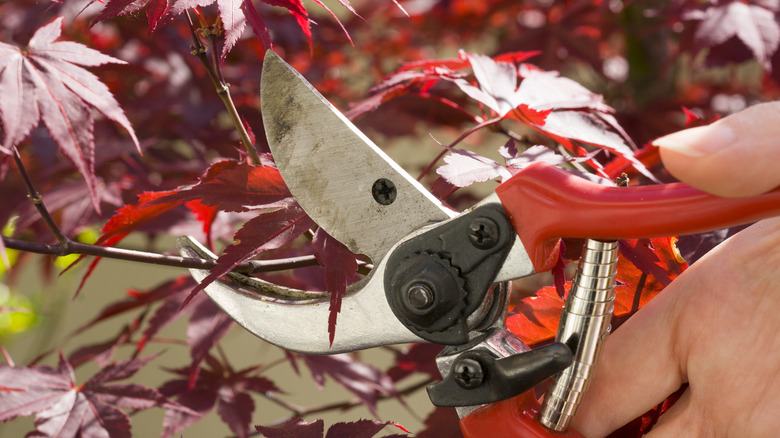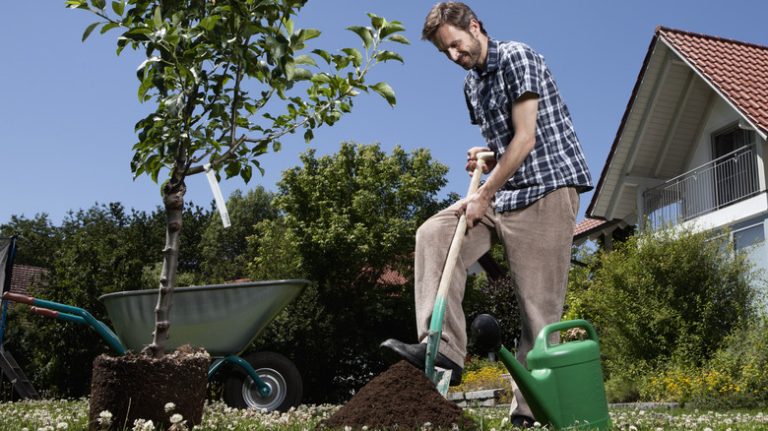Known for their gorgeous red leaves, Japanese maple trees can make for a colorful addition to any property. However, despite being quite resilient, Japanese maples are highly susceptible to Verticillium wilt, an incurable disease caused by the fungi Verticillium albo-atrum or Verticillium dahliae. When either of these pathogens comes into contact with your maple’s roots, it makes its way inside and enters the system your tree uses to bring nutrients and water to its branches and leaves. As the disease attempts to spread to different areas of the tree, your maple will shut down its water transportation system to try to slow the progression, causing widespread damage. The branches of an affected tree may start to die, and the wood inside is sometimes streaked with green and gray discoloration. The leaves may also star to brown, curl, wilt, dry, or completely fall off.
Though many Japanese maples that contract verticillium wilt die within weeks, others can live for years with the disease as long as they are well taken care of. Though typical fungicides cannot treat verticillium wilt, the fungus can be managed by making sure the soil stays moist by laying mulch, pruning infected branches, using fertilizers, and making the environment as stress-free as possible for your tree. According to one Purdue study, taking these extra steps may be able to slow down the effects of the disease for years.
Caring for a Japanese maple with verticillium wilt

Because verticillium wilt prevents the tree from transporting water, ensuring that an affected Japanese maple is well-watered is vital. Kansas State University recommends watering at least once a week. Keep an eye out for any changes in leaves or branches. If, after a couple weeks, you notice your tree is still suffering from severe wilt, you can take that as a sign it’s dehydrated. To remedy this, try spreading a layer of mulch on top of the soil that surrounds it. Along with helping the soil to retain more water, this will aid in keeping your plant at a comfortable temperature.
You’ll also want to be mindful of the soil health. Opting for fertilizers with a lot of potassium can help your infected tree to survive despite verticillium wilt. However, be careful of fertilizers that are too high in nitrogen, as they can make the wilting effects worse. If you’re unsure exactly what nutrients your tree needs, try getting a soil test before fertilizing.
Finally, to prolong the look of your tree, you’ll want to prune away branches that are heavily affected or dying. Keep in mind that this won’t eliminate the fungus, as it’s in the roots, but it will help with your Japanese maple’s appearance. For trees that have been infected with verticillium wilt, there is no way to totally eliminate the disease. Even if you do your best to nurture the ground, Verticillium dahlia fungus can stay alive in soil for 10 years or more. In some cases, if the disease has started to spread to other trees, your best course of action may be to remove it.
Preventing verticillium wilt
Although verticillium wilt is often out of your control, there are still some steps you can take to protect your Japanese maple trees from contracting it. For one, since the verticillium wilt fungi attack the root systems of plants, it’s crucial to be mindful of the tree’s surrounding areas. To protect the tree’s roots, Tree Renewal recommends try to keep melting salts only on your sidewalks, and be wary of overwatering. Overwatering can create an ideal environment for fungus to thrive. If you’re planting new Japanese maples, placing them in a soil type with good drainage can prevent waterlogging.
If you end up with an infected tree, you’ll want to keep it from spreading to other plants. When you prune your Japanese maple branches, it’s crucial to disinfect your shears after each branch you cut to prevent inadvertently carrying the fungus to other areas of the tree or to other plants. This can be done by wiping down your pruning shears with 70% isopropyl alcohol or a solution with 10% bleach. Additionally, the soil near affected trees should be left alone, as moving it could spread the fungus even years later. If you’ve had to remove a tree because of the infection, try planting something more resilient against verticillium wilt in its place, such as holly, fir, poplar, or dogwood.
